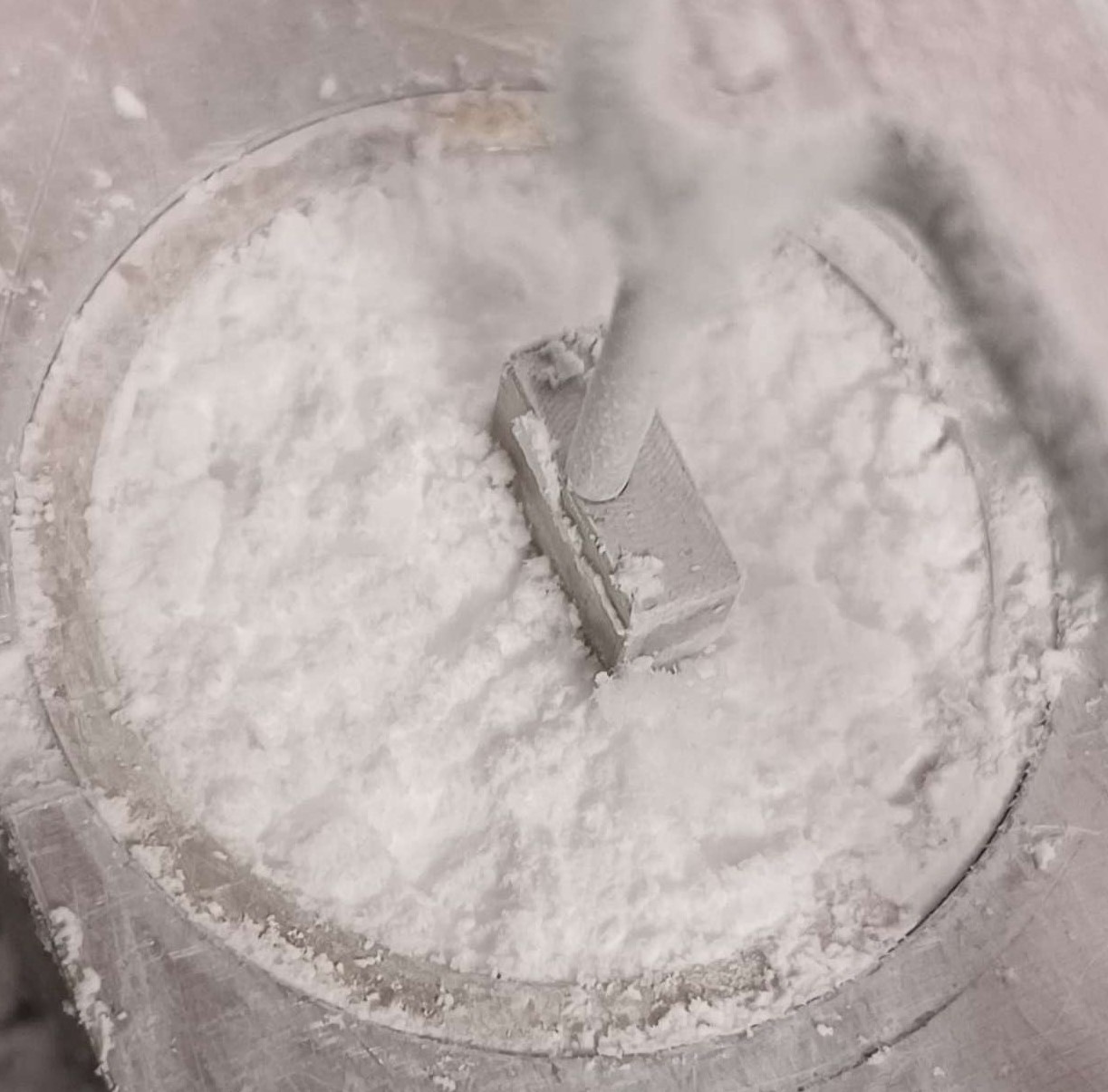Experimental results from the CoPhyLab -Detection of the influences of surface structureson particle ejection in comet-simulationexperiments
- TU Braunschweig, IGEP
Cometary activity is not yet fully understood. One goal is to determine the
locations on a comet more likely to be active. This work focuses on how surface
structures influence cometary activity. Therefore, laboratory experiments were
conducted to examine different surface structures. To simulate the most simple
version of a comet, the samples were made out of granular water ice. Different
structures were embedded into the samples. Three structures were chosen for
the experiment to simulate some possible structures to find on a surface. A nar-
row but deep hole, a cliff with a 45° angle and an even square imitating a crack
are realized.
The prepared samples then were inserted into an actively cooled vacuum cham-
ber. At a pressure of about 1 · 10−5mbar the samples were illuminated with
a halogen lamp which simulates the Sun. Exposed to a radiation of around 2
solar constants, the samples show the first signs of activity. The whole process
is filmed with a camera. Every video is about 20 minutes long. In the end, all
the recorded images are stacked and color coded to visualize the most active
regions of the sample. In Fig. 1, the results of an experiment with a cliff are
presented. The upper plot shows the accumulated brightness of the particles
over the position on the sample. The peaks mark the most active areas. The
color coded trajectories of the particles are visualized in the middle plot. The
lower plot indicates the location and shape of the realized structure.
The required intensity of radiation to show activity is lowered by structuring
the samples as observed in the experiments. A reason for that might be less
bound material on the edges of the structures. Another reason could be that
structured surfaces can produce up to 61 % higher sublimation rates than flat
surfaces as results from simulations ( Höfner, 2021).
Further, structured samples feature areas with directed jets. This might be due
to directed gas flow carrying the particles in a certain direction. Since the struc-
tures were embedded into the sample and the camera is observing the sample
parallel to the surface, there is no information about the activity inside the
structures. This setup only observes particles leaving the surface of the sample.
Improving the setup to investigate the structure’s inside will be part of future
work.
Figure 1: (center) Color coded trajectories of ejected particles from a sample
after 20 minutes of illumination with an artificial sun. (bottom) Schematics of
the position of the structure inside of the sample. (top) Accumulated brightness
of each column of the particle trajectories. The two peaks at 3.5 mm and 5 mm
are not related to the measurements but result from pixel errors.

Figure 2: Sample holder filled with micro-granular water ice. Inserted into
the sample holder is a bridge with a stamp used to create the embedded struc-
ture. The left side of the stamp is located in the middle of the sample holder to
compare the flat and structured parts of the sample.
How to cite: Knoop, C., Kreuzig, C., Meier, G., Brecher, J. N., Schuckart, C., Timpe, M., and Blum, J.: Experimental results from the CoPhyLab -Detection of the influences of surface structureson particle ejection in comet-simulationexperiments, Europlanet Science Congress 2024, Berlin, Germany, 8–13 Sep 2024, EPSC2024-499, https://doi.org/10.5194/epsc2024-499, 2024.